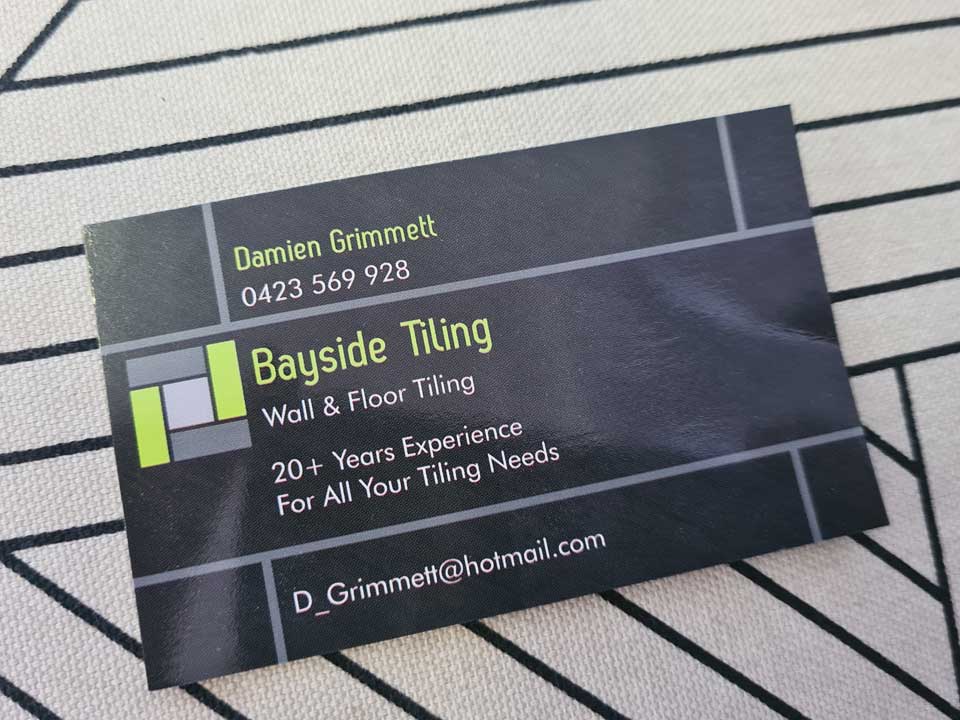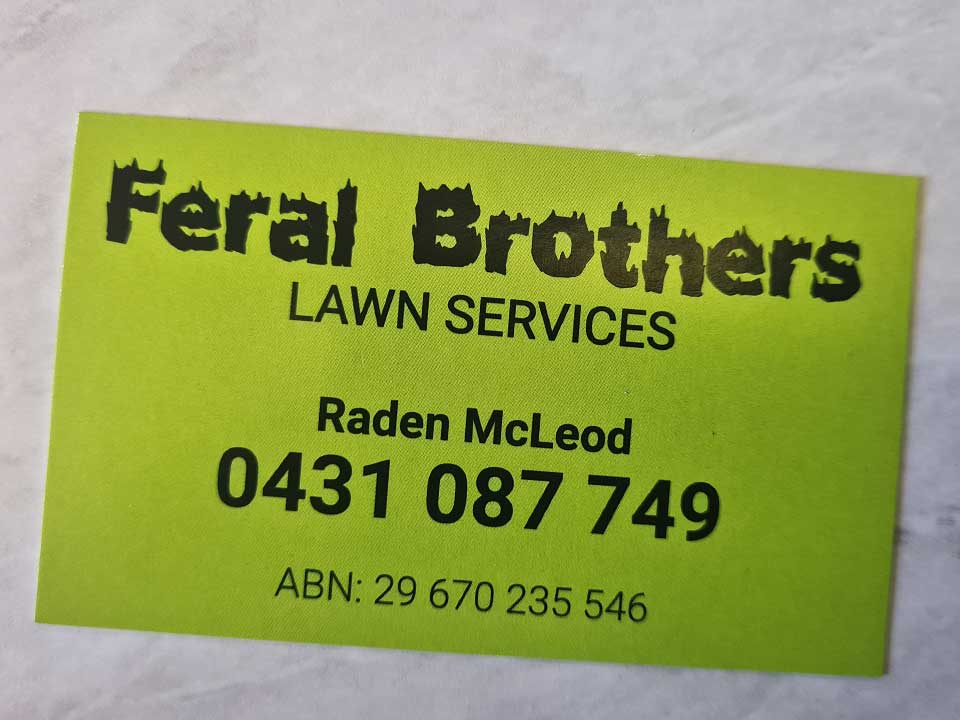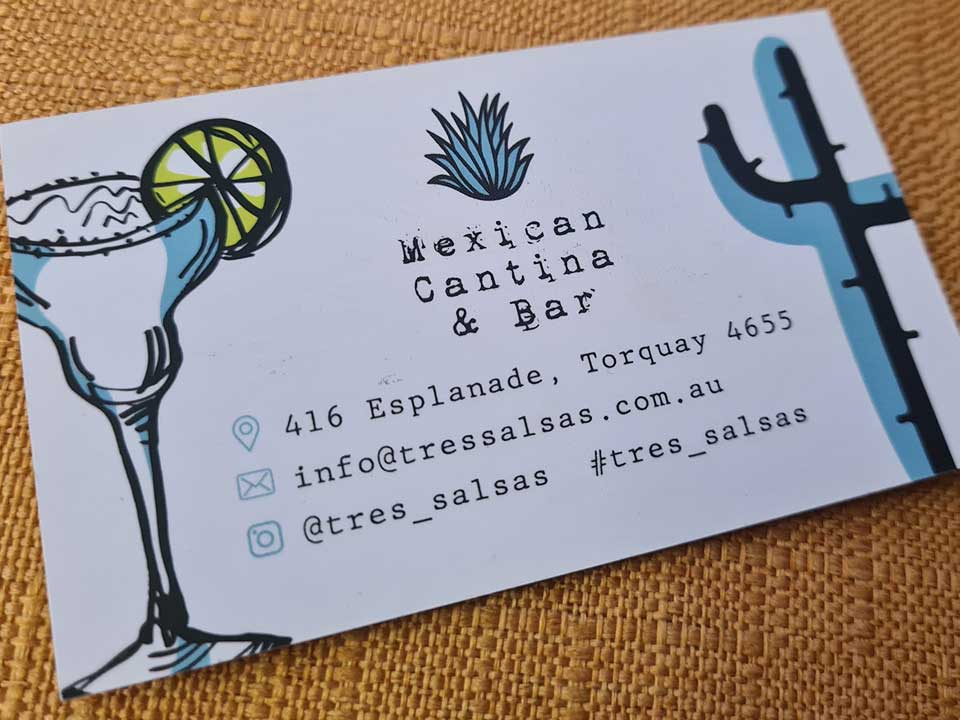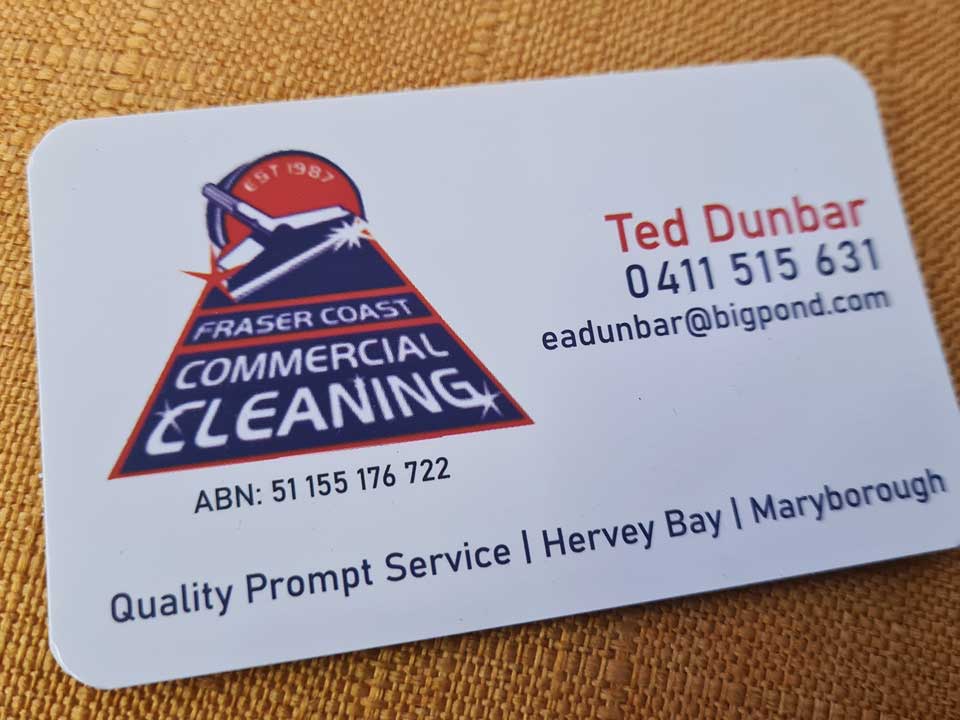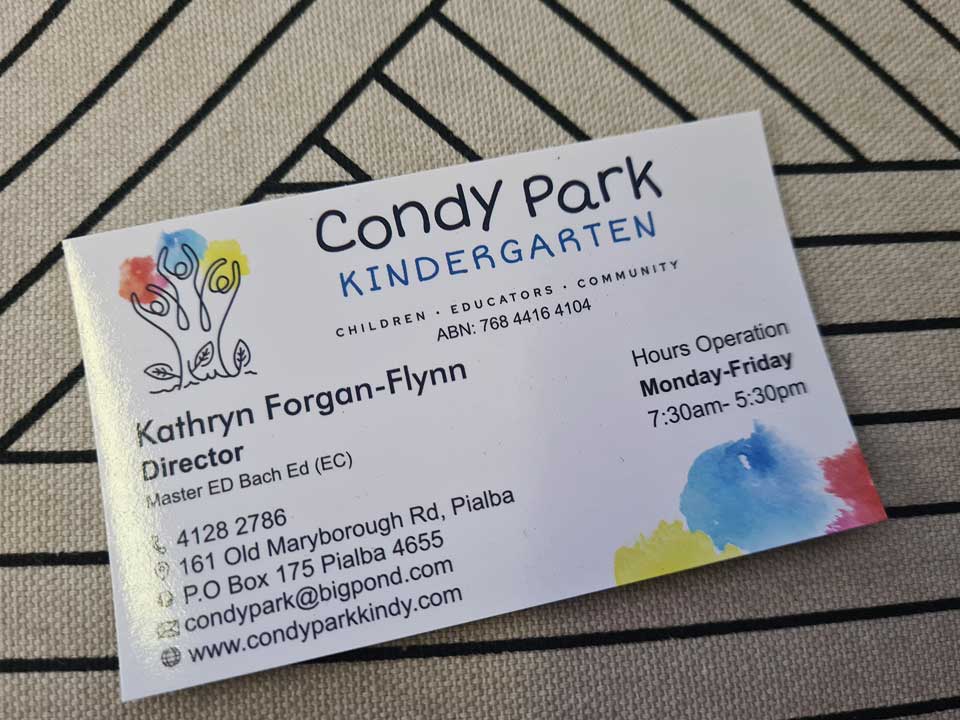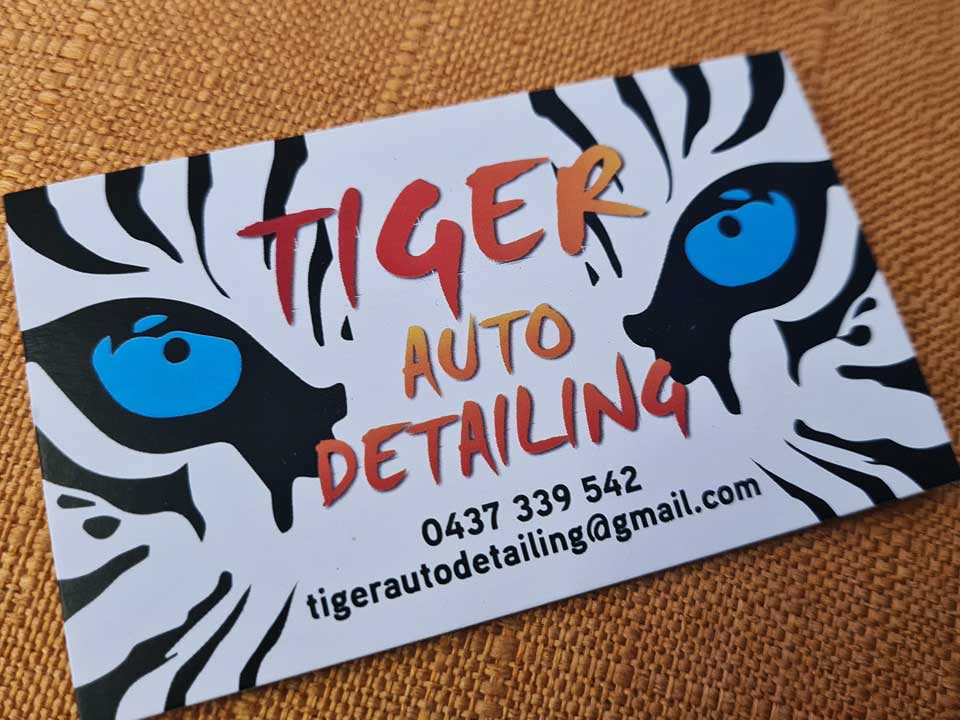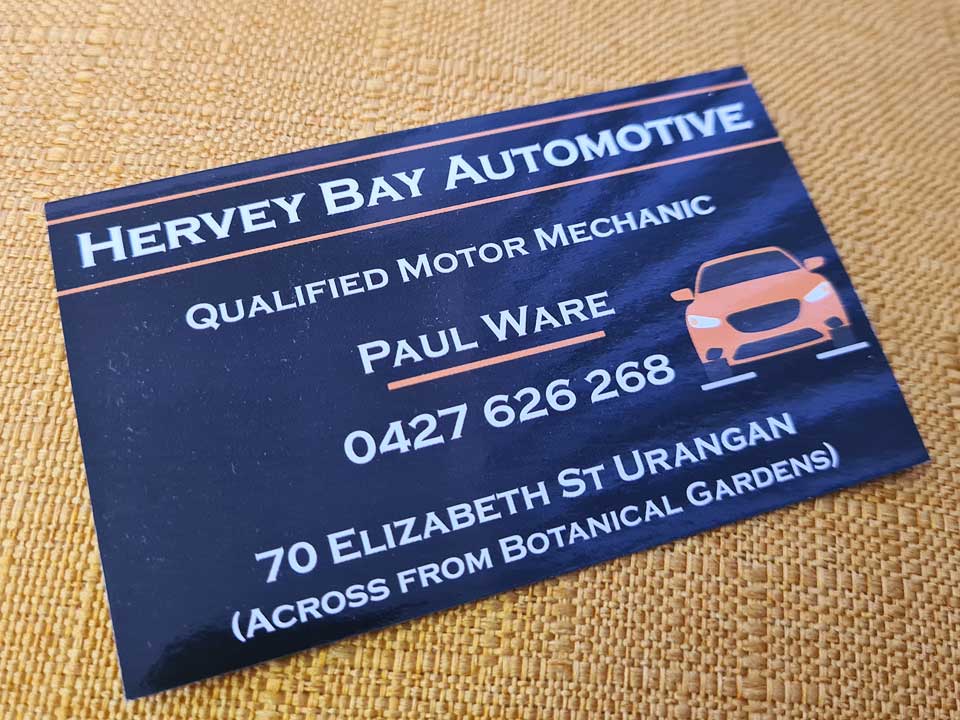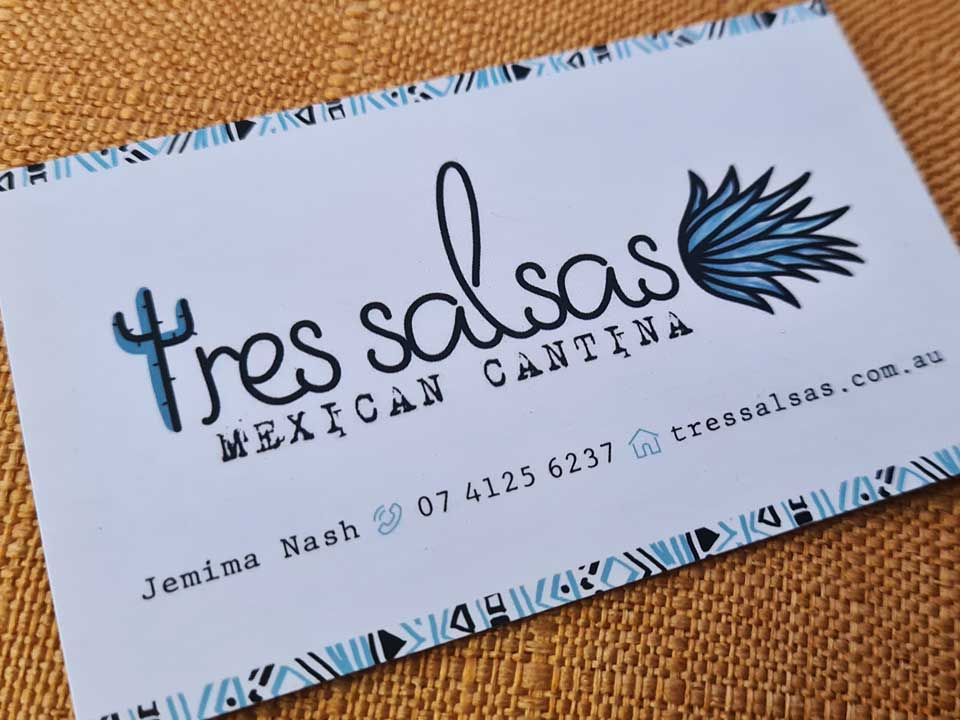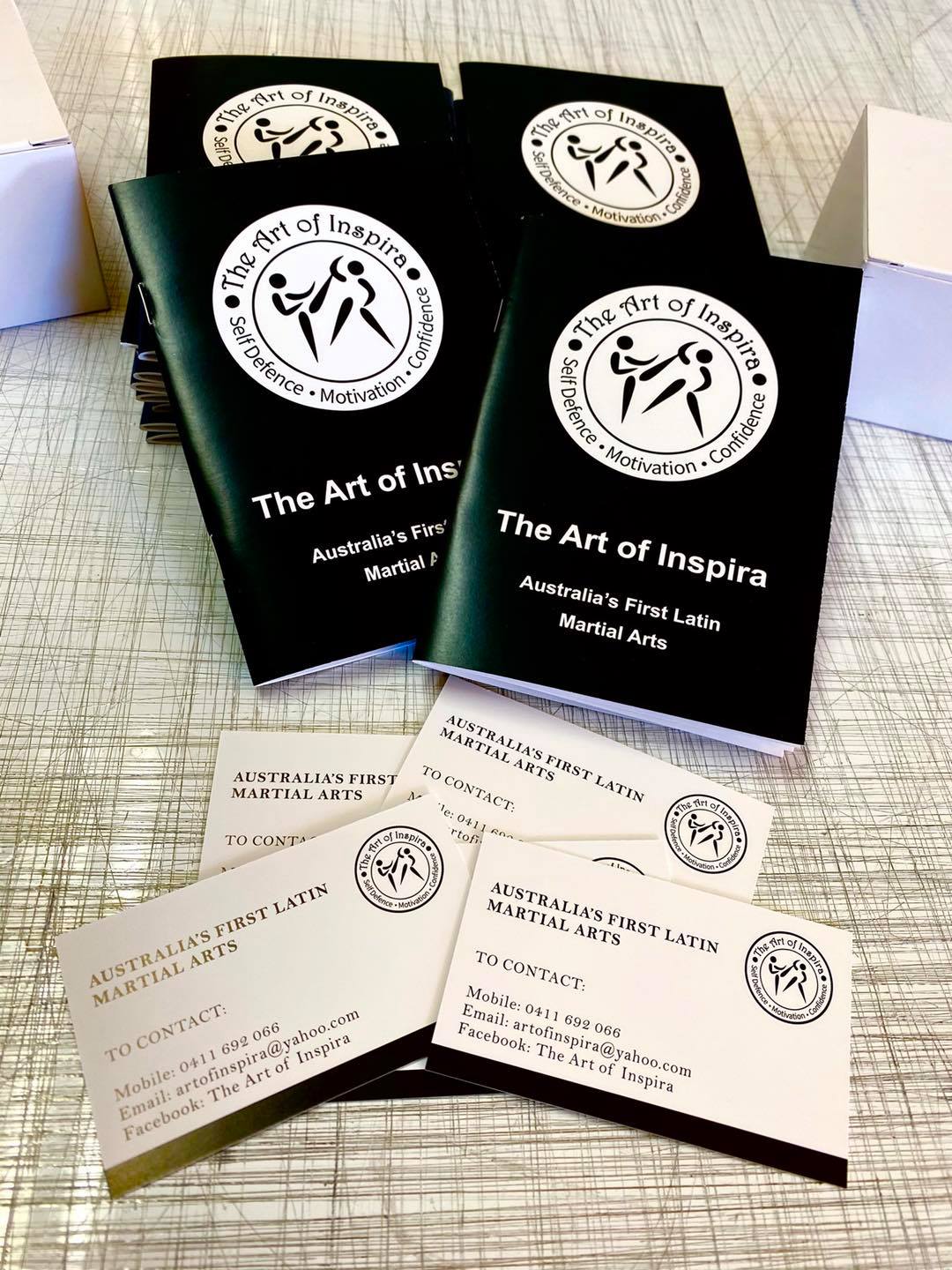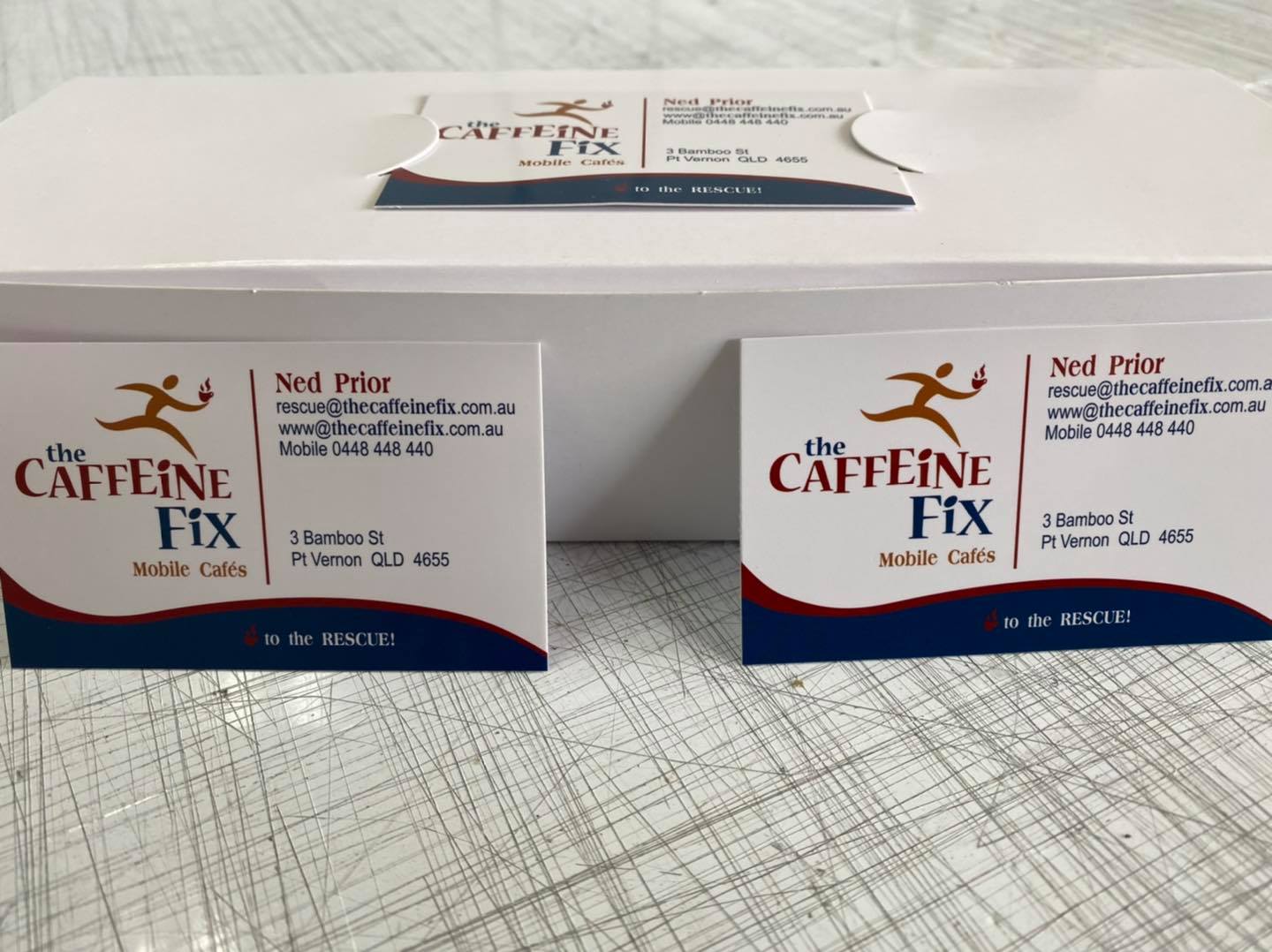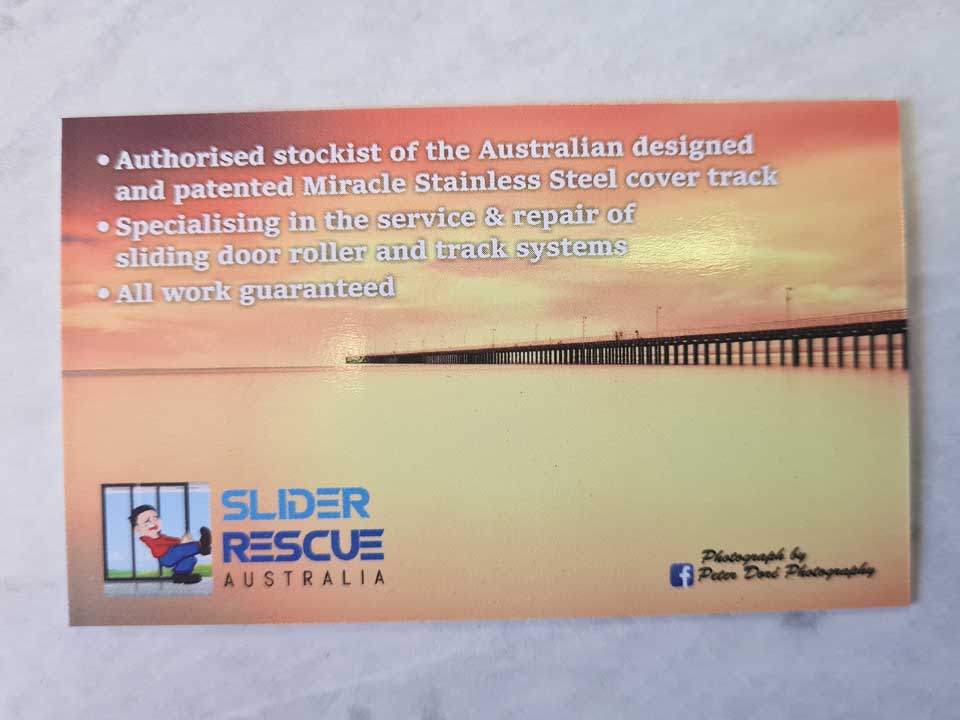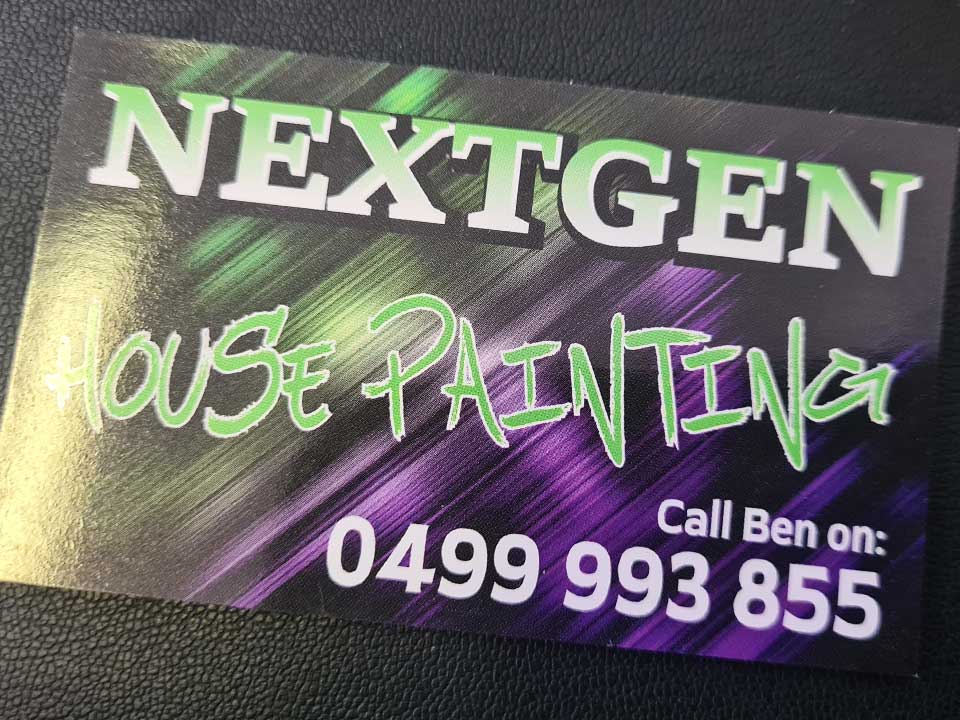When it comes to networking, business cards are often your first impression. They’re not just a piece of card; they’re a tangible representation of who you are and what you do. Having a physical business card can set you apart. It’s a quick and effective way to share your contact information, and it gives potential clients or partners something to remember you by. Think of it as a mini advertisement for your personal brand or business.
In Australia, where face-to-face networking is still very much valued, business cards play a crucial role. Whether you’re at a trade show, a conference, or a casual meet-up, having a well-designed card on hand can open doors and create opportunities. It conveys professionalism and shows that you’re serious about your business. Plus, they’re easy to carry and can be handed out on the spot, making them an incredibly useful tool in any networking scenario.
Choosing the right type of business card is essential to effectively communicate who you are and what you do. Whether you go for a standard option or something more luxurious or creative, your business card is a key part of your networking toolkit.
Types of Business Cards
There’s no one-size-fits-all approach. Understanding the different types available can help you choose the right one that suits your needs.
Standard and Basic Business Cards
Standard business cards are typically made from cardstock and come in a traditional rectangular shape. They usually feature your name, title, company logo, and contact details. These cards are a great option if you’re looking for something simple and effective. They’re cost-effective and can be printed in bulk, making them a popular choice for many professionals.
Premium and Luxury Business Cards
If you want to make a statement, premium or luxury business cards are the way to go. These cards often use high-quality materials, such as thicker cardstock, textured finishes, or even metal. Some may include special features like embossing or foil accents, which can really make your card stand out. While they might come at a higher price point, the impression they leave can be well worth the investment, especially in competitive industries where first impressions matter.
Unique and Creative Designs
For those looking to express their personality or brand in a more unconventional way, unique and creative business cards offer a fantastic opportunity. These can range from unusual shapes—like circular or square cards—to innovative designs that incorporate artwork or custom illustrations. A creative card can spark conversation and help you be remembered, making it a valuable tool in networking.
Industry-Specific Business Cards
Depending on your field, you might want to tailor your card to reflect your profession. For example, real estate agents often use cards that showcase their listings, while creative professionals might incorporate design elements that highlight their work. Tailoring your business card to your industry not only makes it more relevant but can also help you connect more deeply with your audience.
Business Card Design
Designing a business card is an important step in creating your personal brand. It’s not just about aesthetics; the design should effectively communicate who you are and what you represent. Let’s dive into some key elements and tips for creating an impactful business card.
Key Elements of Effective Design
There are a few essential elements that every business card should include. Your name is, of course, a must, along with your job title and the name of your business. Don’t forget your contact details, such as phone number and email address. If you have a website or social media handles that are relevant, include those as well. The layout should be clean and easy to read, as clutter can make it hard for people to quickly absorb your information.
Tips for Designing Your Business Card
When it comes to design, think about the impression you want to leave. Choose a font that reflects your personality and is easy to read—avoid overly ornate fonts that can be difficult to decipher. Colour plays a huge role too; select colours that align with your brand and evoke the right feelings. For example, blue can convey trust, while green often represents growth and sustainability. Lastly, keep your design consistent with your overall branding, so it feels cohesive with your other marketing materials.
Incorporating Logos and Branding
Your logo is a key component of your business card design. If you have a logo, make sure it’s prominently displayed. This not only enhances brand recognition but also adds a professional touch. Consider how your logo interacts with the other elements on the card—there should be a visual harmony. If you don’t have a logo yet, it might be worth investing in one, as it can elevate the overall look of your card and strengthen your brand identity.
Minimalist vs. Modern Designs
Minimalist designs have been quite popular in recent years, focusing on simplicity and clarity. This can be a great choice if you want your card to feel clean and professional. On the other hand, modern designs may incorporate bold colours, unique layouts, and even illustrations. The key is to choose a style that reflects your personality and the essence of your business. It should resonate with your target audience and set the right tone for your interactions.
Customisation Options (e.g., Foil, Textures, Shapes)
Customisation is where you can really make your business card stand out. Consider using special finishes like foil stamping or spot UV to add a touch of luxury. Textured cardstock can also make a memorable tactile impression. Don’t be afraid to explore different shapes beyond the traditional rectangle—think about circular or square cards, or even foldable designs that can provide extra space for information.
Trends in Business Card Design
Currently, we’re seeing a rise in the use of bold colours and gradients, as well as the incorporation of augmented reality elements. These trends can help your card feel fresh and contemporary. However, remember that trends come and go, so choose elements that feel true to your brand rather than simply jumping on the latest fad.
Eco-Friendly and Sustainable Options
Many people are becoming more conscious of their environmental impact, so consider eco-friendly options when designing your business card. Look for printers that offer recycled materials or biodegradable inks. This not only helps the planet but also shows your commitment to sustainability, which can resonate well with like-minded clients and customers.
Printing Business Cards
Once you’ve got your design locked in, the next step is to get those business cards printed. This part can feel a bit overwhelming, especially with so many options out there. Let’s break it down to make the process easier for you.
Choosing the Right Printing Method
The first thing to consider is the printing method. There are a few options available, such as digital printing and offset printing. Digital printing is great for short runs and allows for quick turnaround times. It’s often more cost-effective for small quantities. On the other hand, offset printing can deliver higher quality, especially if you’re looking for a specific colour match or unique finishes. If you have a larger order, this method can also be more economical per card.
Local Print Shops vs. Online Printing
You’ll need to decide whether to go with a local print shop or an online printing service. Local shops can be beneficial because you can discuss your needs in person and often see samples of their work. Plus, you’ll support a local business! However, online printing services usually offer a wider range of options and can often be cheaper, especially for bulk orders. Some popular online services even provide design templates, which can save you time if you’re starting from scratch.
Costs and Budgeting for Printing
The price of printing business cards can vary significantly depending on factors like the quantity, materials, and finishes. It’s a good idea to set a budget before you start shopping around. Keep in mind that while it might be tempting to go for the cheapest option, you often get what you pay for. Investing a bit more in quality can pay off in the long run when it comes to making a strong impression.
Printable Business Card Templates
If you’re feeling creative but need a little help, printable business card templates can be a fantastic resource. Many online platforms provide free or paid templates that you can customise to fit your design. This can be especially useful if you’re just getting started and want to try out different designs without committing to a full print run. Just make sure to choose a template that fits standard card dimensions to avoid any printing issues.
Comparative Analysis of Printing Services
It’s always a good idea to do a bit of research and compare printing services before making a decision. Look for reviews and testimonials, and consider reaching out to others in your network for recommendations. Some popular online services include Vistaprint, Moo, and Overnight Prints, each with their own strengths and weaknesses. Take the time to compare pricing, turnaround times, and the quality of materials offered. This can help ensure you choose a service that meets your needs and delivers high-quality cards that you’ll be proud to hand out.
Ordering Business Cards: Why Wolfpack Print Should Be Your Go-To Provider
When it’s time to order business cards, the goal is simple: you want a solution that reflects your brand, fits your budget, and stands out in the competitive market. While there are plenty of options available, choosing the right printing service is crucial.
Choosing a Print Provider
Wolfpack Print stands out as a trusted local choice for commercial printing and expert graphic design, offering a personalised approach that larger, impersonal services like Vistaprint or Officeworks can’t always match. Here’s why Wolfpack should be at the top of your list:
- Expert Graphic Design & Customisation
One of the biggest advantages of choosing Wolfpack Print is their in-house graphic design expertise. Unlike many online providers that rely on pre-set templates, Wolfpack offers custom design services tailored to your brand’s unique identity. Whether you’re looking for a distinctive logo, a unique card shape, or a bespoke design, the team at Wolfpack will work closely with you to create a business card that truly stands out. - Quality & Attention to Detail
Wolfpack Print is known for its premium printing quality. They use state-of-the-art equipment to produce vibrant, crisp prints that make your business cards look polished and professional. Whether you need a basic card or one with specialised finishes like embossed details, foil stamping, or custom textures, Wolfpack can help you achieve that high-end look without the premium price tag. - Flexible Printing Options
Whether you need a small batch of business cards for an event or a larger order for ongoing marketing efforts, Wolfpack offers flexible printing options. This flexibility is especially valuable for small businesses or startups, where you might not want to commit to a huge print run. You can print just what you need and easily reorder as your business grows or as your contact information changes. - Fast Turnaround & Local Convenience
Unlike some online services that can have long wait times for delivery, Wolfpack Print offers quick turnaround times to get your business cards to you when you need them. As a locally-based print and design business in Queensland, they offer a more personal and hands-on experience, including in-person consultations for those who prefer face-to-face interactions. - Affordable Pricing with No Hidden Fees
At Wolfpack Print, you get great value for money. While their pricing is competitive, you’re not sacrificing quality for cost. They offer transparent pricing with no hidden fees, so you’ll know exactly what you’re paying for upfront. Whether you’re ordering in bulk or just a few, they’ll work with you to ensure your business cards fit your budget without compromising on quality. - Local Knowledge, Local Service
Choosing Wolfpack means supporting a local business that understands the needs of Australian businesses. Wolfpack is committed to delivering exceptional service and maintaining strong relationships with clients across Queensland and beyond. They know the local market and can offer advice tailored to your specific business needs. - Sustainable Printing Options
Wolfpack Print is also mindful of sustainability and offers eco-friendly printing options, including recycled paper stocks and sustainable printing practices. If being environmentally responsible is important to you, you can rest assured that Wolfpack has your values in mind.
For high-quality, custom business cards and expert design services, Wolfpack Print is a standout choice in Queensland. With their personalised approach, attention to detail, and commitment to customer satisfaction, you’re guaranteed to get much better looking business cards that leave a lasting impression.
If you’re ready to create business cards that represent your brand the right way, reach out to Wolfpack Print today!
Marketing Strategies with Business Cards
Now that you’ve got your business cards sorted, it’s time to think about how to effectively use them as part of your marketing strategy. Business cards can be a powerful tool beyond just sharing contact information. Let’s explore some ways to integrate them into your broader marketing efforts.
Combining Business Cards with Flyers and Postcards
One effective strategy is to combine your business cards with other marketing materials, like flyers or postcards. For example, if you’re attending an event or trade show, consider creating a flyer that highlights a specific promotion or service, and include your business card with it. This not only provides potential clients with more information but also makes it easier for them to remember you.
You might also think about adding a special offer or discount on your cards or flyers, encouraging recipients to take action. This combination can help reinforce your brand message and make your marketing materials more memorable.
Using Business Cards in Broader Marketing Strategies
Your business cards can play a significant role in your overall marketing strategy. Think of them as an extension of your brand. Whenever you’re networking—whether at a formal event or a casual gathering—handing out your business card is a great way to reinforce your brand identity.
Incorporate your business cards into direct mail campaigns too. Sending personalised cards to past clients or leads can keep you top of mind and encourage them to reach out for your services again. Additionally, consider digital business cards that can be easily shared via email or social media, which is especially relevant in our increasingly digital world.
Networking Tips and Best Practices for Distribution
When it comes to distributing your business cards, there are a few best practices to keep in mind. Always be proactive—if you’re having a conversation with someone and the topic shifts to business, don’t hesitate to offer your card.
It’s also important to personalise your approach. Rather than just handing out cards indiscriminately, take a moment to engage with the person. Ask questions, listen to their needs, and when the moment is right, present your card. This personal touch can make a significant difference in how your card is received.
Also, consider where you keep your cards. A professional cardholder can help keep them neat and accessible, making it easier to share when the opportunity arises.
Success Stories and Case Studies
Many businesses have effectively leveraged their business cards to make meaningful connections. For instance, a graphic designer might share their card during an art exhibit, leading to a client who needs branding for their new company.
Or consider a real estate agent who hands out cards at local events, which results in referrals and new listings. These real-world examples show just how impactful a well-placed business card can be.
Digital Alternatives
As technology continues to evolve, so do the ways we share our professional information. Digital alternatives to traditional business cards are becoming increasingly popular, offering innovative ways to connect with others. Let’s take a look at some of these options and how they can complement your networking efforts.
QR Code Business Cards
One of the simplest ways to integrate technology into your business cards is by using QR codes. These little squares can link directly to your website, portfolio, or social media profiles. Imagine handing someone your card and they simply scan the QR code with their phone to access all your contact information or see your latest work.
This not only makes it easier for people to connect with you, but it also saves space on your card. You can include just the QR code along with a brief call to action, like “Scan to learn more!” This can be especially effective in settings where you may want to direct people to a specific page, like a promotional landing page or an event registration form.
Digital Business Cards and Apps
Digital business cards are another fantastic option, especially for those who are frequently on the go. There are various apps available that allow you to create a digital card that can be shared via email or text message. This means you can easily send your contact information to anyone, anywhere, without needing a physical card.
Many of these apps also allow for customisation, so you can still maintain your brand identity. Plus, they often come with added features like tracking how many times your card has been viewed or shared, which can provide valuable insights into your networking efforts.
Interactive Elements (e.g., Augmented Reality)
If you really want to impress and engage potential clients or partners, consider incorporating interactive elements like augmented reality (AR) into your digital business cards. With AR technology, you can create an experience where users can scan your card with their phone and see additional content—such as videos, 3D models, or animations—that showcases your work or tells your brand story.
This not only captures attention but also creates a memorable experience that sets you apart from others. While this option may require a bit more investment and technical know-how, the impact it can have is definitely worth considering, especially in creative industries.
Legal Considerations
When it comes to business cards, there are some important legal considerations to keep in mind, especially if you operate in a regulated industry. Understanding these regulations can help ensure that your cards not only represent your brand well but also comply with any legal requirements. Let’s delve into a couple of key points you should consider.
Regulations for Business Cards in Specific Industries
Certain industries have specific regulations regarding the information that must be included on business cards. For example, professionals in the legal and medical fields often need to include their licensing information, qualifications, or even specific disclaimers. If you’re in real estate, you might also be required to display your license number on your cards.
It’s crucial to research the regulations that apply to your industry to avoid any compliance issues. Not only does this help you stay within the law, but it also adds an extra layer of professionalism to your cards, showing that you’re knowledgeable and credible in your field.
Including Disclaimers or Licensing Information
In addition to any required information, consider if there are disclaimers or additional details that would benefit your clients or customers. For instance, if your services come with specific conditions or limitations, including a brief disclaimer can help set the right expectations.
If you’re a financial advisor or a consultant, you might also want to note that your advice is for informational purposes only. Including licensing information, especially if you’re in a field that requires it, can provide reassurance to your clients that they’re working with a qualified professional.
Tips for Maintaining Your Business Card
Now that you’ve got your business cards printed and ready to go, it’s essential to think about how to maintain them over time. After all, these little cards represent your brand, and you want them to make the best impression possible. Here are some tips on how to care for your business cards and keep your information current.
How to Store and Care for Your Business Cards
First things first—how you store your business cards can make a big difference in their condition. It’s a good idea to use a sturdy cardholder to keep them safe from bending or getting damaged. A professional-looking cardholder not only protects your cards but also presents them nicely when you hand them out.
If you prefer to keep a larger supply on hand, consider a dedicated box or a slim portfolio. Just make sure it’s kept in a cool, dry place to avoid any moisture damage. If you’re carrying cards in your wallet or bag, be cautious. It’s easy for them to get wrinkled or stained, so try to keep them in a separate compartment if possible.
Keeping Your Information Up to Date
Another crucial aspect of maintaining your business cards is keeping your information up to date. If you change your phone number, email, or even your job title, it’s time for a new print run. It can be easy to overlook this, but handing out outdated cards can lead to missed opportunities and confusion.
To make this process easier, set a reminder to review your business card information every six months. This way, you can catch any changes before they slip your mind. If you’re using digital business cards or QR codes, make sure those links point to current information as well.
Common Mistakes to Avoid
As with anything in business, there are some common pitfalls when it comes to creating and using business cards. By being aware of these mistakes, you can ensure your cards are effective and make a positive impression. Let’s look at a few key areas where people often go wrong.
Design and Printing Pitfalls
One of the most frequent mistakes happens during the design phase. Many people try to cram too much information onto their cards. Remember, less is often more! Stick to the essentials—your name, title, company name, phone number, and email. If you try to include every detail, the card can end up looking cluttered and unprofessional.
Another design pitfall is neglecting to choose the right fonts and colours. Make sure your text is legible and that the colours reflect your brand. If your card is hard to read or doesn’t align with your overall brand aesthetic, it can send the wrong message. Also, pay attention to the quality of the printing. Low-resolution images or poor-quality materials can cheapen your brand. Investing in a good printing service pays off in the long run.
Missteps in Distribution and Follow-Up
When it comes to distribution, many people make the mistake of being too passive. Don’t just wait for someone to ask for your card—be proactive! If you’re in a conversation that’s business-related, offer your card. It’s also important to tailor your approach. Don’t hand out cards indiscriminately; instead, engage with people first and then present your card in a context that makes sense.
Follow-up is another area where mistakes can happen. After meeting someone and handing out your card, make sure to follow up with a message or email. This could be a simple thank you or a note to remind them of your conversation. It keeps the connection alive and shows you’re genuinely interested in building a relationship.
Resources
Now that you’re equipped with all this knowledge about business cards, it’s time to explore some resources that can help you in the design and printing process. Whether you’re looking for tools to create your cards or recommendations for reliable printing services, we’ve got you covered.
Tools for Designing Business Cards
There are plenty of online tools available that make designing your own business cards easy and fun. Platforms like Canva and Adobe Spark offer user-friendly interfaces and a range of templates to get you started. These tools allow you to customise your designs with different fonts, colours, and graphics, making it simple to create something that reflects your brand.
If you’re looking for something a bit more advanced, Adobe Illustrator is a great choice for those with graphic design experience. It gives you full control over every aspect of your design, though it may come with a steeper learning curve.
Recommended Printing Services
When it comes to printing your business cards, it’s important to choose a service that delivers quality results. One option worth considering the Business Card services at Wolfpack Print. They’re commercial printers who not only provide high-quality printing but also have expert graphic designers on hand to help bring your vision to life. Whether you need assistance with the design process or want to ensure your card looks its best, their team can provide valuable support.






